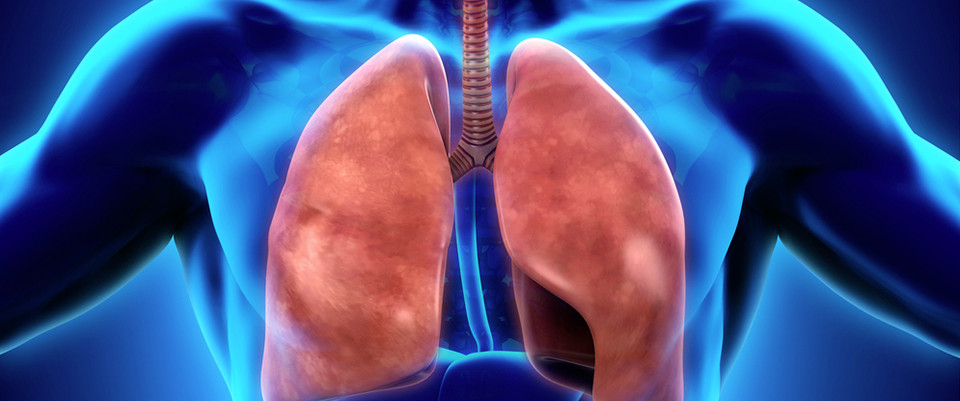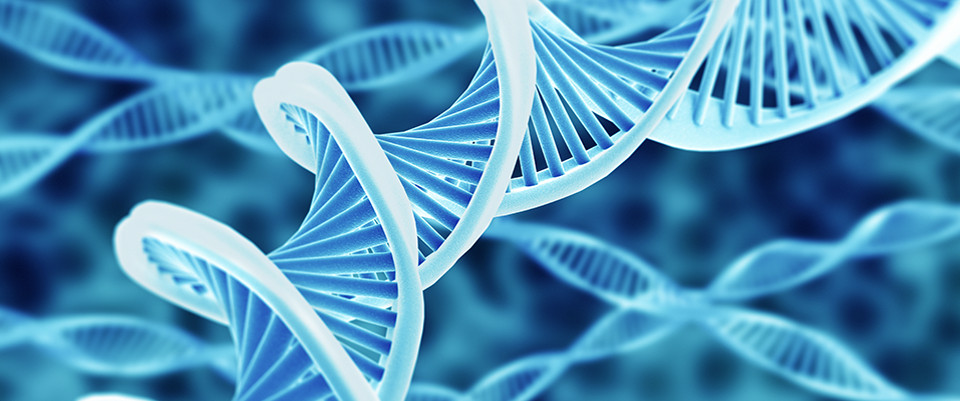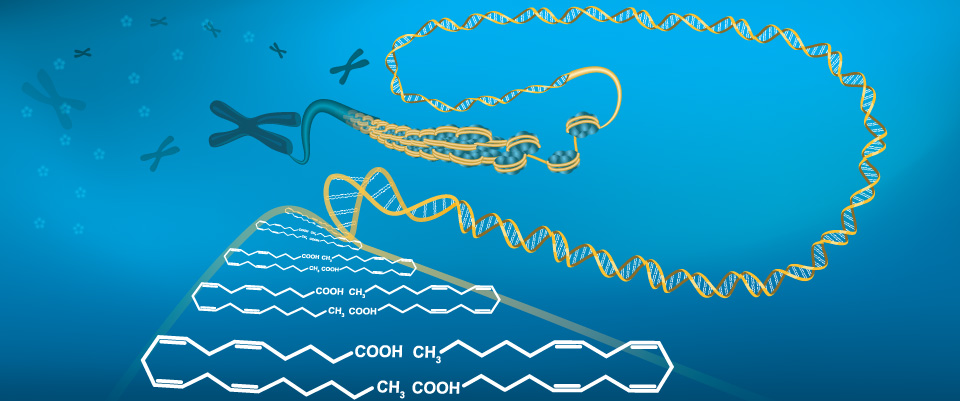PubMed
Transcriptome and targeted hormone metabolome reveal the molecular mechanisms of flower abscission in camellia
Front Plant Sci. 2022 Dec 22;13:1076037. doi: 10.3389/fpls.2022.1076037. eCollection 2022.ABSTRACTINTRODUCTION: Camellia is among the most ornamentally valuable flowers and plants worldwide. Flower abscission typically causes significant financial losses by the horticultural landscape. Previous research has revealed that phytohormones, transcription factors, and other genes involved in floral development regulate the maintenance and mortality of flowers.METHODS: In this study, for the first time, the transcriptomes and targeted hormone metabolomics of three developmental stages of the receptacles of two distinct camellia strains (CF: abscission strain, CHF: nonabscission strain) were analyzed to determine their roles in regulating blossom abscission in camellia.RESULTS: ABA content was shown to be considerably upregulated throughout all phases of CF development, as were the genes implicated in the ABA production pathway and their downstream counterparts. Highly expressed genes in CF were involved in galactose metabolism, phenylpropanoid biosynthesis, amino and nucleotide sugar metabolism, pentose and glucuronate interconversions, and MAPK. Among others, highly expressed genes in CHF are associated with fructose and mannose metabolism, alpha-linolenic acid metabolism, biosynthesis of secondary metabolites, starch and sucrose metabolism, and cutin, suberin, and wax biosynthesis. A vast variety of stress response-related pathways and redox-related activities were also shown to be active in CHF. In contrast, CF dramatically activated pathways associated with lignin production, keratinogenesis, cell wall biogenesis, and ABA response. A comparative transcriptomic study of the CF and CHF pathways revealed that the downstream response pathways of hormones, including CTK, BR, IAA, ethylene, and GA, were very active in CF, indicating a significant amount of signal transduction and transcriptional regulation by CF. In addition, members of the transcription factor family, such as MYB, bHLH, MADS, and WD40, may regulate flower abscission.DISCUSSION: A comparative transcriptome analysis of two distinct strains of camellia receptacles elucidates the molecular processes and regulatory characteristics of flower abscission and provides direction for the targeted improvement and breeding of camellia.PMID:36618654 | PMC:PMC9813748 | DOI:10.3389/fpls.2022.1076037
Ingenious characterization and assessment of lentil germplasm collection to aphid <em>Acyrthosiphon pisum</em> stress unveils distinct responses
Front Plant Sci. 2022 Dec 21;13:1011026. doi: 10.3389/fpls.2022.1011026. eCollection 2022.ABSTRACTLentil cultivation is often hampered by aphid population outspreads with detrimental impacts to crop development and production, challenging food safety and agriculture sustainability. The pea aphid (Acyrthosiphon pisum) is a significant threat to lentil in the temperate zone rainfed systems. A set of management practices including resilient cultivars and application of insecticides have effectively controlled aphid infestation. However, the plant defense against insect pests is scantily dissected and limited to the individual components including antibiosis, antixenosis and tolerance that constitute a combination of plant stress responses. Utilizing a lentil germplasm collection, we assessed the antixenosis and aphid tolerance mechanisms in association to important morphological parameters. Physiological parameters including relative water content (RWC) measured at 24h and 48h post-aphid infestation revealed genotype-specific responses. The contents of key plant hormones including salicylic acid (SA), jasmonic acid (JA), abscisic acid (ABA) and indoleacetic acid (IAA) implicated in defense signal-transduction pathways were also determined in lentil accessions after aphid herbivory infestation. In parallel, the expression of hallmark defense genes governed by SA- and JA-signaling pathways at 24h and 48h post aphid herbivory revealed significant differentiation patterns among the accessions. An interplay of hormone crosstalk is unveiled that possibly governs defense responses and aphid resistance. Besides the metabolomic profiling of accessions under aphid herbivory indicated the indispensable role of key secondary metabolites accumulation such as flavonoids, alkaloids, phenolics and fatty acids as a front line of plant defense and a potential integration of hormone signaling pathways in metabolome reprogramming. Overall, the study presents a panorama of distinct lentil responses to aphids and a critical view of the molecular mechanisms implicated in lentil insect defense to further our insight and advance crop protection and breeding approaches in a climate changing environment.PMID:36618648 | PMC:PMC9811392 | DOI:10.3389/fpls.2022.1011026
Transcriptome and metabolome analyses reveal the key genes related to grain size of big grain mutant in Tartary Buckwheat (<em>Fagopyrum tartaricum</em>)
Front Plant Sci. 2022 Dec 22;13:1079212. doi: 10.3389/fpls.2022.1079212. eCollection 2022.ABSTRACTGrain size with high heritability and stability is an important selection target during Tartary buckwheat breeding. However, the mechanisms that regulate Tartary buckwheat grain development are unknown. We generated transcriptome and metabolome sequencing from 10 and 15 days past anthesis (DPA) grains of big grain mutant (bg1) and WT, and identified 4108 differentially expressed genes (DEGs) including 93 significantly up-regulated differential genes and 85 significantly down-regulated genes in both stages, simultaneously. Meanwhile, we identified DEGs involved in ubiquitin-proteasome pathway, HAI-KU (IKU) pathway, mitogen-activated protein kinase (MAPK) signaling pathway, plant hormone (auxin, brassinosteroids and cytokinins) transduction pathway and five transcription factor families, including APETALA (AP2), GROWTH-REGULATING FACTORS (GRF), AUXIN RESPONSE FACTOR (ARF), WRKY and MYB. Weighted gene co-expression network analysis (WGCNA) was performed and obtained 9 core DEGs. Conjoint analyses of transcriptome and metabolome sequencing screened out 394 DEGs. Using a combined comprehensive analysis, we identified 24 potential candidate genes that encode E3 ubiquitin-protein ligase HIP1, EMBRYO-DEFECTIVE (EMB) protein, receptor-like protein kinase FERONIA (FER), kinesin-4 protein SRG1, and so on, which may be associated with the big-grain mutant bg1. Finally, a quantitative real-time Polymerase Chain Reaction (qRT-PCR) assay was conducted to validate the identified DEGs. Our results provide additional knowledge for identification and functions of causal candidate genes responsible for the variation in grain size and will be an invaluable resource for the genetic dissection of Tartary buckwheat high-yield molecular breeding.PMID:36618631 | PMC:PMC9815120 | DOI:10.3389/fpls.2022.1079212
Integrated transcriptomic and metabolomic analyses of the molecular mechanisms of two highland barley genotypes with pyroxsulam responses
Front Plant Sci. 2022 Dec 21;13:1030578. doi: 10.3389/fpls.2022.1030578. eCollection 2022.ABSTRACTHighland barley is one of the few crops that can be grown at high elevations, making it a key resource within the Tibet Plateau. Weeds are a significant threat to highland barley production, and new herbicides and tolerant barley varieties are needed to control this ever-growing problem. A better understanding of existing herbicide resistance mechanisms is therefore needed. In this study, transcriptomic and metabolomic analyses were used to identify molecular and physiological changes in two highland barley genotypes with differing sensitivities to the herbicide pyroxsulam. We identified several stress-responsive metabolites, including flavonoids and antioxidants, which accumulated to significantly higher levels in the pyroxsulam-resistant genotype. Additionally, we found key genes in both the flavonoid biosynthesis pathway and the antioxidant system that were up-regulated in pyroxsulam-resistant barley. This work significantly expands on the current understanding of the molecular mechanisms underlying differing pyroxsulam tolerance among barley genotypes and provides several new avenues to explore for breeding or engineering tolerant barley.PMID:36618617 | PMC:PMC9812518 | DOI:10.3389/fpls.2022.1030578
Metagenomic and bile acid metabolomic analysis of fecal microbiota transplantation for recurrent Clostridiodes difficile and/or inflammatory bowel diseases
Med Res Arch. 2022 Oct 31;10(10). doi: 10.18103/mra.v10i10.3318.ABSTRACTBACKGROUND: Fecal microbiota transplantation (FMT) is an effective treatment of recurrent Clostridioides difficile infections (rCDI), but has more limited efficacy in treating either ulcerative colitis (UC) or Crohn's disease (CD), two major forms of inflammatory bowel diseases (IBD). We hypothesize that FMT recipients with rCDI and/or IBD have baseline fecal bile acid (BA) compositions that differ significantly from that of their healthy donors and that FMT will normalize the BA compositions.AIM: To study the effect of single colonoscopic FMT on microbial composition and function in four recipient groups: 1.) rCDI patients without IBD (rCDI-IBD); 2.) rCDI with IBD (rCDI+IBD); 3.) UC patients without rCDI (UC-rCDI); 4.) CD patients without rCDI (CD-rCDI).METHODS: We performed 16S rRNA gene sequence, shotgun DNA sequence and quantitative bile acid metabolomic analyses on stools collected from 55 pairs of subjects and donors enrolled in two prospective single arm FMT clinical trials (Clinical Trials.gov ID NCT03268213, 479696, UC no rCDI ≥ 2x IND 1564 and NCT03267238, IND 16795). Fitted linear mixed models were used to examine the effects of four recipient groups, FMT status (Donor, pre-FMT, 1-week post-FMT, 3-months post-FMT) and first order Group*FMT interactions on microbial diversity and composition, bile acid metabolites and bile acid metabolizing enzyme gene abundance.RESULTS: The pre-FMT stools collected from rCDI ± IBD recipients had reduced α-diversity compared to the healthy donor stools and was restored post-FMT. The α-diversity in the pre-FMT stools collected from UC-rCDI or CD-rCDI recipients did not differ significantly from donor stools. FMT normalized some recipient/donor ratios of genus level taxa abundance in the four groups. Fecal secondary BA levels, including some of the secondary BA epimers that exhibit in vitro immunomodulatory activities, were lower in rCDI±IBD and CD-rCDI but not UC-rCDI recipients compared to donors. FMT restored secondary BA levels. Metagenomic baiE gene and some of the eight bile salt hydrolase (BSH) phylotype abundances were significantly correlated with fecal BA levels.CONCLUSION: Restoration of multiple secondary BA levels, including BA epimers implicated in immunoregulation, are associated with restoration of fecal baiE gene counts, suggesting that the 7-α-dehydroxylation step is rate-limiting.PMID:36618438 | PMC:PMC9817289 | DOI:10.18103/mra.v10i10.3318
Prevention of Cognitive Frailty in Patients of Older Age Groups after Open-Heart Surgery under Cardiopulmonary Bypass
Arch Razi Inst. 2022 Jun 30;77(3):1113-1123. doi: 10.22092/ARI.2022.357395.2035. eCollection 2022 Jun.ABSTRACTAcute change in mental state is characterized by an impaired level of consciousness, decreased attention, and cognitive changes, and has a variable course throughout its period. Delirium is common in the elderly and hospitalized patients, especially after major surgeries, and increases mortality and morbidity in patients. This study was designed to investigate the relationship between the incidence of delirium after heart surgery and some intrusive factors during surgery. A total of 263 middle-aged, elderly, and chronic patients with functional class III-IV heart failure were classified based on the New York Heart Association classification and valvular heart disease. Cognitive impairment screening was performed using the Mini-Cog test and clock drawing test in addition to standard general clinical examinations on patients. Cognitive impairment was diagnosed in patients with coronary heart disease preparing for planned surgical treatment, regardless of age, while the results of both tests were significantly worse in elderly patients than in their middle-aged counterparts. In the early postoperative period, both among the middle-aged and elderly patients, there was a significant improvement in the results of the clock drawing test. Middle-aged patients also showed improved results on the Mini-Cog test, while the elderly patients showed an increase in cognitive dysfunction. In the third stage of the examination of cognitive function in the two studied groups of patients with valvular pathology at the first checkpoint, no statistically significant differences were found in the Mini-Mental State Examination (MMSE), Mini-Cog, and clock drawing test. The results of the clock drawing test in the main and control groups were recorded at 8.9±0.4 and 5.8±0.3 points, respectively (P<0.05). The MMSE results were estimated at the points of 27.1±0.1 and 24.1±0.2 in the main and control groups, respectively, while the results of the Mini-Cog test were calculated at 2.2±0.2 and 1.2±0.4 words in the main and control group, respectively (P<0.05). The application of the algorithm for the prevention of cognitive frailty in patients of older age groups after open-heart surgery under cardiopulmonary bypass would possibly lead to a decrease in the number of early and late postoperative complications, which shows the necessity of using it for patients of older age groups in multimodal programs to prepare them for surgical interventions.PMID:36618298 | PMC:PMC9759241 | DOI:10.22092/ARI.2022.357395.2035
<em>Ascophyllum nodosum</em> polysaccharide regulates gut microbiota metabolites to protect against colonic inflammation in mice
Food Funct. 2023 Jan 9. doi: 10.1039/d2fo02964b. Online ahead of print.ABSTRACTAscophyllum nodosum polysaccharide (ANP) can protect against colonic inflammation but the underlying mechanism is still unclear. This study has determined the metabolites of gut microbiota regulated by ANP to reveal the mechanism of the anti-inflammation effect of ANP. Using an in vitro colonic fermentation model, the results indicate that gut microbiota could utilize a proportion of ANP to increase the concentrations of short-chain fatty acids (SCFAs) and decrease ammonia content. Metabolomics revealed that 46 differential metabolites, such as betaine, L-carnitine, and aminoimidazole carboxamide ribonucleotide (AICAR), could be altered by ANP. Metabolic pathway analysis showed that ANP mainly up-regulated the phenylalanine, tyrosine, and tryptophan biosynthesis and aminoacyl-tRNA biosynthesis, which were negatively correlated with inflammation progression. Interestingly, these metabolites associated with inflammation were also up-regulated by ANP in colitis mice, including betaine, L-carnitine, AICAR, N-acetyl-glutamine, tryptophan, and valine, which were mainly associated with amino acid metabolism and aminoacyl-tRNA biosynthesis. Furthermore, the metabolites modulated by ANP were associated with the relative abundances of Akkermansia, Bacteroides, Blautia, Coprobacillus, Enterobacter, and Klebsiella. Additionally, based on VIP values, betaine is a key metabolite after the ANP supplement in vitro and in vivo. As indicated by these findings, ANP can up-regulate the production of SCFAs, betaine, L-carnitine, and AICAR and aminoacyl-tRNA biosynthesis to protect against colonic inflammation and maintain intestinal health.PMID:36617886 | DOI:10.1039/d2fo02964b
Metabolomic Analysis of Plasma in Huntington's Disease Transgenic Sheep (Ovis aries) Reveals Progressive Circadian Rhythm Dysregulation
J Huntingtons Dis. 2023 Jan 4. doi: 10.3233/JHD-220552. Online ahead of print.ABSTRACTBACKGROUND: Metabolic abnormalities have long been predicted in Huntington's disease (HD) but remain poorly characterized. Chronobiological dysregulation has been described in HD and may include abnormalities in circadian-driven metabolism.OBJECTIVE: Here we investigated metabolite profiles in the transgenic sheep model of HD (OVT73) at presymptomatic ages. Our goal was to understand changes to the metabolome as well as potential metabolite rhythm changes associated with HD.METHODS: We used targeted liquid chromatography mass spectrometry (LC-MS) metabolomics to analyze metabolites in plasma samples taken from female HD transgenic and normal (control) sheep aged 5 and 7 years. Samples were taken hourly across a 27-h period. The resulting dataset was investigated by machine learning and chronobiological analysis.RESULTS: The metabolic profiles of HD and control sheep were separable by machine learning at both ages. We found both absolute and rhythmic differences in metabolites in HD compared to control sheep at 5 years of age. An increase in both the number of disturbed metabolites and the magnitude of change of acrophase (the time at which the rhythms peak) was seen in samples from 7-year-old HD compared to control sheep. There were striking similarities between the dysregulated metabolites identified in HD sheep and human patients (notably of phosphatidylcholines, amino acids, urea, and threonine).CONCLUSION: This work provides the first integrated analysis of changes in metabolism and circadian rhythmicity of metabolites in a large animal model of presymptomatic HD.PMID:36617787 | DOI:10.3233/JHD-220552
Maternal metabolomic profiling and congenital heart disease risk in offspring: A systematic review of observational studies
Prenat Diagn. 2023 Jan 8. doi: 10.1002/pd.6301. Online ahead of print.ABSTRACTOBJECTIVES: Aetiological understanding and screening methods for congenital heart disease (CHD) are limited. Maternal metabolomic assessment offers potential to identify risk factors and biomarkers.METHODS: We performed a systematic review (PROSPERO CRD42022308452) investigating the association between fetal/childhood CHD and endogenous maternal metabolites. Ovid-MEDLINE, Ovid-EMBASE and Cochrane Library were searched between inception and 06/09/2022. Case control studies were included analysing maternal blood or urine metabolites in pregnancy or postpartum where there was fetal/childhood CHD. Risk of bias assessment utilised the SIGN methodology checklist and narrative synthesis was performed.RESULTS: 134 records were screened with eight eligible studies (n=3,242 pregnancies, n=842 CHD-affected offspring). Five studies performed untargeted metabolomic analysis in pregnancy. Metabolites distinguishing case and control groups spanned lipid, glucose, and amino-acid pathways, with the development of sensitive risk prediction models. No single metabolite consistently distinguished cases and controls across studies. Three studies performed targeted analysis postnatally with altered lipid and amino acid metabolites and raised homocysteine and markers of oxidative stress identified in cases. Included studies reported small sample sizes, analysing different biosamples at variable time points using differing techniques.CONCLUSIONS: At present, there is not enough evidence to confidently associate maternal metabolomic profiles with offspring CHD risk. However, several identified pathways warrant further investigation. This article is protected by copyright. All rights reserved.PMID:36617630 | DOI:10.1002/pd.6301
Short-Term Effects of <em>Trans</em>-Cinnamic Acid on the Metabolism of <em>Zea mays</em> L. Roots
Plants (Basel). 2023 Jan 2;12(1):189. doi: 10.3390/plants12010189.ABSTRACTtrans-Cinnamic acid is a phenolic compound widely studied in plant metabolism due to its importance in regulating different plant processes. Previous studies on maize plants showed that this compound could affect plant growth and causes metabolic changes in the leaves when applied. However, its effects on root metabolism are not well known. This study analyses the short-term effect of trans-cinnamic acid on the morphology of vascular bundle elements and metabolism in maize roots. At short times (between 6 and 12 h), there is a reduction in the content of many amino acids which may be associated with the altered nitrogen uptake observed in earlier work. In addition, the compound caused an alteration of the vascular bundles at 48 h and seemed to have changed the metabolism in roots to favor lignin and galactose synthesis. The results obtained complement those previously carried out on maize plants, demonstrating that in the short term trans-cinnamic acid can trigger stress-coping processes in the treated plants.PMID:36616318 | DOI:10.3390/plants12010189
Multi Omics Analysis Revealed a Resistance Mechanism of Tibetan Barley (<em>Hordeum vulgare</em> L., Qingke) Infected by <em>Ustilago hordei</em>
Plants (Basel). 2022 Dec 29;12(1):157. doi: 10.3390/plants12010157.ABSTRACTTibetan barley (Hordeum vulgare L., qingke) is the principal cereal cultivated on Tibet. Ustilago hordei causing covered smut is a serious disease that limits the yield of qingke. Here, based on multi omics study including metabolome, proteome and transcriptome, we show that during infection, primary metabolisms such as carbohydrate, amino acid, and lipids were significantly changed. Jasmonic acid, which perform as a biotic stress signaler, was significantly repressed, and related genes or proteins also showed different expression in infected qingke. In addition, other defense-related compounds such as riboflavin, ascorbic acid, and protease inhibitors were also detected in omics data. Our results revealed a preliminary biological profile of qingke infected by U. hordei and provide a resource for further research.PMID:36616285 | DOI:10.3390/plants12010157
Mulberroside F from In Vitro Culture of Mulberry and the Potential Use of the Root Extracts in Cosmeceutical Applications
Plants (Basel). 2022 Dec 28;12(1):146. doi: 10.3390/plants12010146.ABSTRACTMulberry (Morus spp.) is primarily used in sericulture, and its uses also extend to the food, pharmaceutical, and cosmetic industries. Mulberry extracts are rich in many bioactive compounds that exhibit a wide range of biological properties. Mulberroside F (Moracin M-6, 3'-di-O-β-D-glucopyranoside), one of the bioactive compounds found in mulberry, has previously been reported as a whitening agent by inhibiting melanin synthesis and exhibiting antioxidant effects. However, there is still limited information on the presence of this compound in plants cultured in vitro. In this study, the mulberroside F content, biochemical, and cytotoxic properties of the extracts from mulberry cultured in vitro were determined. The results revealed that both root and callus were found to be a potential source of mulberroside F. Furthermore, the mulberroside F content was positively correlated with the inhibitory effects on tyrosinase activity. Cell viability assay also revealed that crude extract of the mulberry root has no cytotoxicity in both human keratinocyte cell line (HaCaT) and Vero cells. Taken together, mulberry tissue culture represents a possible alternative and continuous production of mulberroside F, which could be further utilized in cosmeceutical applications.PMID:36616275 | DOI:10.3390/plants12010146
An Integrated Metabolomic and Gene Expression Analysis of 'Sachinoka' Strawberry and Its Somaclonal Mutant Reveals Fruit Color and Volatiles Differences
Plants (Basel). 2022 Dec 23;12(1):82. doi: 10.3390/plants12010082.ABSTRACTPlant tissue culture produces a wide range of genetic variations which are useful for quality improvement of the plant species. However, the differences in metabolic components and the key genes responsible for the difference in metabolic components between somaclonal variation and the original parent are still largely unknown. In this study, a mutant named 'Mixue' was identified with somaclonal variation of the 'Sachinoka' strawberry. The contents of pelargonidin-3-O-glucoside and cyanidin-3-O-glucoside in the red fruit of 'Mixue' were significantly decreased compared with 'Sachinoka'. In comparison with 'Sachinoka', the expression levels of FaMYB10, FaMYB11.2, FaWD40 and FaTT19 in the turning fruit of 'Mixue' were significantly down-regulated, while the expression of FaMYB1 was significantly up-regulated in the red fruit. 'Sachinoka' and 'Mixue' fruits were found to have 110 volatile components. Among them, 15 volatile components in the red fruit of 'Mixue' were significantly increased compared with 'Sachinoka', such as nerolidol, benzaldehyde, ethyl hexanoate, ethyl isovalerate, which led to an enhanced aroma in 'Mixue' and might result from the up-regulated expression of FaNES1, FaCNL and FaAATs in 'Mixue'. These results provide useful information on the effect of somaclonal variation on metabolic components of strawberry fruit and lay the foundation for the improvement in quality of strawberry.PMID:36616212 | DOI:10.3390/plants12010082
Bioassay Analysis and Molecular Docking Study Revealed the Potential Medicinal Activities of Active Compounds Polygonumins B, C and D from <em>Polygonum minus</em> (<em>Persicaria minor</em>)
Plants (Basel). 2022 Dec 22;12(1):59. doi: 10.3390/plants12010059.ABSTRACTPolygonumins B, C and D, derivative compounds of polygonumins A, were isolated from the stem of Polygonum minus. Based on NMR results, the structure of polygonumins derivatives is comprised of four phenylpropanoid units and a sucrose unit, with a similar structure to polygonumins A. However, the structural differences between polygonumins B (1), C (2) and D (3) can be distinguished based on the existence of methoxy, ethanoyl and hydroxyl groups and protons which bind to C-4, C-4' and C-3″. Interestingly, these bioactive compounds showed various medicinal properties based on our investigation on antioxidant, anticholinesterase and anti-HIV-1 protease activities. The IC50 value of DPPH and ABTS (antioxidant activities) was in the following descending order: polygonumins B > polygonumins C > polygonumins A > polygonumins D. In addition, almost similar pattern of antioxidant activity was observed for anti-acetylcholinesterase activity based on its IC50 value in descending order: polygonumins B > polygonumins C > polygonumins D > polygonumins A. On the other hand, polygonumins C and D showed inhibition of HIV-1 protease activity more than the positive control, pepstatin A. Finally, molecular docking studies on AChE and BChE proteins were carried out in order to gain insight into the mode of interactions between these compounds and the active residues for both enzymes. These remarkable findings indicate that these compounds have potential to be developed as targeted drugs for Alzheimer's disease or as anti-HIV drugs.PMID:36616187 | DOI:10.3390/plants12010059
Ceramides in Autoimmune Rheumatic Diseases: Existing Evidence and Therapeutic Considerations for Diet as an Anticeramide Treatment
Nutrients. 2023 Jan 2;15(1):229. doi: 10.3390/nu15010229.ABSTRACTAutoimmune rheumatic diseases (AIRDs) constitute a set of connective tissue disorders and dysfunctions with akin clinical manifestations and autoantibody responses. AIRD treatment is based on a comprehensive approach, with the primary aim being achieving and attaining disease remission, through the control of inflammation. AIRD therapies have a low target specificity, and this usually propels metabolic disturbances, dyslipidemias and increased cardiovascular risk. Ceramides are implicated in inflammation through several different pathways, many of which sometimes intersect. They serve as signaling molecules for apoptosis, altering immune response and driving endothelial dysfunction and as regulators in the production of other molecules, including sphingosine 1-phosphate (S1P) and ceramide 1-phosphate (C1P). With lipid metabolism being severely altered in AIRD pathology, several studies show that the concentration and variety of ceramides in human tissues is altered in patients with rheumatic diseases compared to controls. As a result, many in vitro and some in vivo (animal) studies research the potential use of ceramides as therapeutic targets in rheumatoid arthritis (RA), ankylosing spondylitis, systemic lupus erythematosus, fibromyalgia syndrome, primary Sjögren's syndrome, systemic sclerosis, myositis, systemic vasculitis and psoriatic arthritis. Furthermore, the majority of ceramide synthesis is diet-centric and, as a result, dietary interventions may alter ceramide concentrations in the blood and affect health. Subsequently, more recently several clinical trials evaluated the possibility of distinct dietary patterns and nutrients to act as anti-ceramide regimes in humans. With nutrition being an important component of AIRD-related complications, the present review details the evidence regarding ceramide levels in patients with AIRDs, the results of anti-ceramide treatments and discusses the possibility of using medical nutritional therapy as a complementary anti-ceramide treatment in rheumatic disease.PMID:36615886 | DOI:10.3390/nu15010229
Gut Microbiome and Serum Metabolome Profiles of Capsaicin with Cognitive Benefits in APP/PS1 Mice
Nutrients. 2022 Dec 27;15(1):118. doi: 10.3390/nu15010118.ABSTRACTCapsaicin, a natural bioactive component, has been reported to improve cognition and ameliorate the pathology of Alzheimer's disease (AD). Studies have linked AD to alterations in gut microbiota composition and serum metabolites. In the present study, we examined the alterations in serum metabolome and gut microbiome in APPswe/PS1dE9 (APP/PS1) mice treated with capsaicin. Capsaicin treatments resulted in a significant increase in the abundance of Akkermansia, Faecalibaculum, Unclassified_f_Atopobiaceae, and Gordonibacter and a significant decrease in the abundance of Adlercreutzia, Peptococcaceae, Alistipes, Oscillibacter and Erysipelatoclostridium. Furthermore, the species Akkermansia muciniphila (A. muciniphila) was significantly enriched in capsaicin-treated APP/PS1 mice (p = 0.0002). Serum metabolomic analysis showed that capsaicin-treated APP/PS1 mice had a significant higher level of tryptophan (Trp) metabolism and a significantly lower level of lipid metabolism compared with vehicle-treated mice. Capsaicin altered serum metabolites, including Kynurenine (Kyn), 5-Hydroxy-L-tryptophan (5-HIT), 5-Hydroxyindoleacetic acid (5-HIAA), indoxylsulfuric acid, lysophosphatidyl cholines (LysoPCs), and lysophosphatidyl ethanolamine (LysoPE). Significant correlations were observed between the gut bacteria and serum metabolite. With regard to the increased abundance of A. muciniphila and the ensuing rise in tryptophan metabolites, our data show that capsaicin alters both the gut microbiota and blood metabolites. By altering the gut microbiome and serum metabolome, a diet high in capsaicin may reduce the incidence and development of AD.PMID:36615777 | DOI:10.3390/nu15010118
Interplay between Cruciferous Vegetables and the Gut Microbiome: A Multi-Omic Approach
Nutrients. 2022 Dec 22;15(1):42. doi: 10.3390/nu15010042.ABSTRACTBrassica vegetables contain a multitude of bioactive compounds that prevent and suppress cancer and promote health. Evidence suggests that the gut microbiome may be essential in the production of these compounds; however, the relationship between specific microbes and the abundance of metabolites produced during cruciferous vegetable digestion are still unclear. We utilized an ex vivo human fecal incubation model with in vitro digested broccoli sprouts (Broc), Brussels sprouts (Brus), a combination of the two vegetables (Combo), or a negative control (NC) to investigate microbial metabolites of cruciferous vegetables. We conducted untargeted metabolomics on the fecal cultures by LC-MS/MS and completed 16S rRNA gene sequencing. We identified 72 microbial genera in our samples, 29 of which were significantly differentially abundant between treatment groups. A total of 4499 metabolomic features were found to be significantly different between treatment groups (q ≤ 0.05, fold change > 2). Chemical enrichment analysis revealed 45 classes of compounds to be significantly enriched by brassicas, including long-chain fatty acids, coumaric acids, and peptides. Multi-block PLS-DA and a filtering method were used to identify microbe-metabolite interactions. We identified 373 metabolites from brassica, which had strong relationships with microbes, such as members of the family Clostridiaceae and genus Intestinibacter, that may be microbially derived.PMID:36615700 | DOI:10.3390/nu15010042
<em>Lacticaseibacillus rhamnosus</em> Probio-M9-Driven Mouse Mammary Tumor-Inhibitory Effect Is Accompanied by Modulation of Host Gut Microbiota, Immunity, and Serum Metabolome
Nutrients. 2022 Dec 20;15(1):5. doi: 10.3390/nu15010005.ABSTRACTGut microbiome may influence tumor growth and cancer treatment efficacy, so it is a potential target for tumor prevention/treatment. This pilot study investigated the preventive and therapeutic effects of a probiotic strain, Lacticaseibacillus rhamnosus Probio-M9 (Probio-M9), against murine mammary cancer. Thirty-six female mice were randomly divided into three groups (n = 12 per group): control (without tumor transplantation), model (tumor transplantation; no probiotic administration), and probiotic (30-day oral gavage of probiotic, started seven days before tumor transplantation). Changes in tumor size were recorded, and blood, tumor tissue, and stool samples were collected at the end of the trial for analyses. Comparing with the model group, the probiotic group had a significantly smaller tumor volume (p < 0.05), a higher fecal microbiota Shannon diversity index, with significant modifications in the gut microbiota structure (p < 0.05), characterized by more Alistipes sp._2, Porphyromonadaceae bacterium_7, and Bacteroidales bacterium 55_9 (p < 0.05). Additionally, Probio-M9 administration elevated the serum IFN-γ, IL-9, IL-13, and IL-27 levels and several metabolites (e.g., pyridoxal, nicotinic acid, 3-hydroxybutyric acid, glutamine; p < 0.05), while reducing IL-5 (p < 0.05). These changes might be associated with the protective effect of Probio-M9 against mammary tumor growth. Thus, probiotic administration could harness host gut microbiome in anti-cancer responses.PMID:36615662 | DOI:10.3390/nu15010005
Probing Folate-Responsive and Stage-Sensitive Metabolomics and Transcriptional Co-Expression Network Markers to Predict Prognosis of Non-Small Cell Lung Cancer Patients
Nutrients. 2022 Dec 20;15(1):3. doi: 10.3390/nu15010003.ABSTRACTTumour metabolomics and transcriptomics co-expression network as related to biological folate alteration and cancer malignancy remains unexplored in human non-small cell lung cancers (NSCLC). To probe the diagnostic biomarkers, tumour and pair lung tissue samples (n = 56) from 97 NSCLC patients were profiled for ultra-performance liquid chromatography tandem mass spectrometry (UPLC/MS/MS)-analysed metabolomics, targeted transcriptionomics, and clinical folate traits. Weighted Gene Co-expression Network Analysis (WGCNA) was performed. Tumour lactate was identified as the top VIP marker to predict advance NSCLC (AUC = 0.765, Sig = 0.017, CI 0.58-0.95). Low folate (LF)-tumours vs. adjacent lungs displayed higher glycolytic index of lactate and glutamine-associated amino acids in enriched biological pathways of amino sugar and glutathione metabolism specific to advance NSCLCs. WGCNA classified the green module for hub serine-navigated glutamine metabolites inversely associated with tumour and RBC folate, which module metabolites co-expressed with a predominant up-regulation of LF-responsive metabolic genes in glucose transport (GLUT1), de no serine synthesis (PHGDH, PSPH, and PSAT1), folate cycle (SHMT1/2 and PCFR), and down-regulation in glutaminolysis (SLC1A5, SLC7A5, GLS, and GLUD1). The LF-responsive WGCNA markers predicted poor survival rates in lung cancer patients, which could aid in optimizing folate intervention for better prognosis of NSCLCs susceptible to folate malnutrition.PMID:36615660 | DOI:10.3390/nu15010003
Analysis of Floral Color Differences between Different Ecological Conditions of <em>Clematis tangutica</em> (Maxim.) Korsh
Molecules. 2023 Jan 3;28(1):462. doi: 10.3390/molecules28010462.ABSTRACTThe Clematis tangutica (Maxim.) Korsh. is a wild flowering plant that is most widely distributed on the Qinghai-Tibet Plateau, with beautiful, brightly colored flowers and good ornamental properties and adaptability. In diverse natural environments, the blossom color of C. tangutica (Maxim.) Korsh. varies greatly, although it is unclear what causes this diversity. It was examined using UPLC-MS/MS and transcriptome sequencing for the investigation of various compounds, differentially expressed genes (DEGs), and flavonoid biosynthesis-related pathways in two flowers in two ecological settings. The results showed that a total of 992 metabolites were detected, of which 425 were differential metabolites, mainly flavonoid metabolites associated with its floral color. The most abundant flavonoids, flavonols and anthocyanin metabolites in the G type were cynaroside, isoquercitrin and peonidin-3-O-glucoside, respectively. Flavonoids that differed in multiplicity in G type and N type were rhoifolin, naringin, delphinidin-3-O-rutinoside, chrysoeriol and catechin. Rhoifolin and chrysoeriol, produced in flavone and flavonol biosynthesis, two flavonoid compounds of C. tangutica (Maxim.) Korsh. with the largest difference in floral composition in two ecological environments. In two ecological environments of flower color components, combined transcriptome and metabolome analyses revealed that BZ1-1 and FG3-1 are key genes for delphinidin-3-O-rutinoside in anthocyanin biosynthesis, and HCT-5 and FG3-3 are key genes for rhoifolin and naringin in flavonoid biosynthesis and flavone and flavonol. Key genes for chlorogenic acid in flavonoid biosynthesis include HCT-6, CHS-1 and IF7MAT-1. In summary, differences in flavonoids and their content are the main factors responsible for the differences in the floral color composition of C. tangutica (Maxim.) Korsh. in the two ecological environments, and are associated with differential expression of genes related to flavonoid synthesis.PMID:36615653 | DOI:10.3390/molecules28010462











